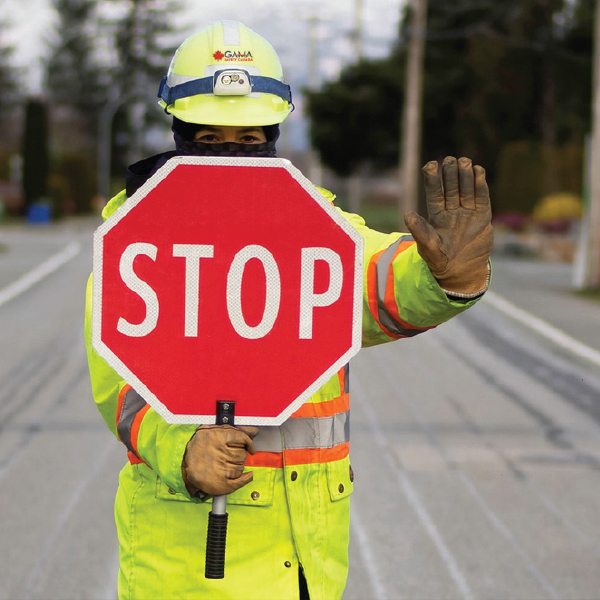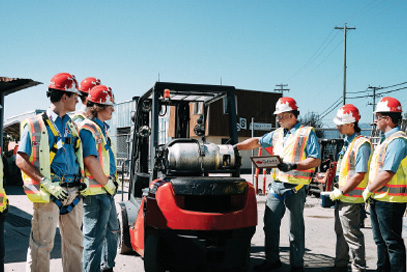Managing Traffic
Flow and Safety on Construction Sites.
Traffic Control Person are responsible for managing and directing the flow of traffic in and around construction sites or areas with heavy equipment. Their role includes using signals and barriers to prevent accidents, ensuring the safety of workers and the public, and maintaining an organized work environment.
Managing Traffic
Flow and Safety on Construction Sites.
Traffic Control Person are responsible for managing and directing the flow of traffic in and around construction sites or areas with heavy equipment. Their role includes using signals and barriers to prevent accidents, ensuring the safety of workers and the public, and maintaining an organized work environment.
OUR PARTNERS AROUND THE WORLD
OUR PARTNERS AROUND THE WORLD
OUR PARTNERS AROUND THE WORLD
OUR PARTNERS AROUND THE WORLD
OUR PARTNERS AROUND THE WORLD
OUR PARTNERS AROUND THE WORLD
OUR PARTNERS AROUND THE WORLD
OUR PARTNERS AROUND THE WORLD
OUR PARTNERS AROUND THE WORLD
OUR PARTNERS AROUND THE WORLD
OUR PARTNERS AROUND THE WORLD
OUR PARTNERS AROUND THE WORLD
OUR PARTNERS AROUND THE WORLD
OUR PARTNERS AROUND THE WORLD
TCP Duties
& Positioning
Learn the basic responsibilities of a Traffic Control Person, including proper stance, equipment, and visibility setup.
Hand Signals
and Safety
Discover essential hand signals, safe communication strategies, and procedures to direct traffic in high-risk zones.
TCP Safety Resources
Guidelines for safe work practices to protect TCPs working in road construction and traffic zones.
PPE requirements for TCPs, including proper high-visibility clothing for day and night work.
OHS guidelines specific to TCPs, including traffic control procedures and road safety requirements.
Awareness video highlighting the risks TCPs face on the road and the importance of driver cooperation.
Information sheet for TCPs on minimizing risks of being struck by vehicles or mobile equipment.
WorkSafeBC guide providing best practices for TCPs to reduce risk of being struck by vehicles.
Traffic Control Person Overview:
Safety, Signaling, and Worksite Coordination
Traffic Control Person (TCPs) play a vital role in maintaining safety on and around roadwork and construction sites. Their primary responsibility is to ensure the safe movement of vehicles and pedestrians while protecting workers and equipment in high-risk traffic environments. Proper signaling, clear communication, and quick decision-making are essential to reducing incidents and improving efficiency on site.

TRAFFIC CONTROL PERSON
Traffic Control Essentials:
Safe Direction of Vehicles and Pedestrian Flow
Traffic Control Person (TCPs), also known as flaggers, play a critical role in maintaining safety at road construction zones, utility worksites, and other areas where vehicle and pedestrian traffic intersect. Their responsibility goes beyond holding a stop/slow sign TCPs are trained professionals who manage dynamic and potentially hazardous environments to prevent accidents, injuries, and costly delays.
This essential training covers all aspects of safe traffic control operations, including site assessment, hazard identification, equipment selection, and legal requirements under Canadian regulations. Participants will learn how to position themselves strategically, communicate effectively with drivers and coworkers, and respond to emergency situations. Emphasis is placed on the correct use of personal protective equipment (PPE), standard signaling techniques, and clear coordination with other traffic control team members.
TRAFFIC CONTROL PERSON Definition
A Traffic Control Person (TCP) is a trained worker responsible for safely directing vehicle and pedestrian traffic around construction sites, road work zones, or other areas where normal traffic flow is disrupted. The TCP ensures that vehicles, workers, and the general public can move through or around a worksite in a coordinated and secure manner, minimizing the risk of collisions, injuries, or delays.
This role is critical in maintaining a safe work zone. TCPs use standardized signals, signage, radios, hand-held stop/slow signs, and personal protective equipment (PPE) to manage traffic effectively. They act as a vital communication link between the traffic flow and workers on site. A TCP must remain alert, make quick decisions under pressure, and be familiar with traffic control plans and site-specific hazards. Training ensures that TCPs can carry out their responsibilities safely and according to provincial and national guidelines.
Traffic Control Person training provides workers with the knowledge and practical skills required to manage traffic safely at work zones. The course typically includes modules on traffic management principles, roles and responsibilities, hazard recognition, legal requirements, signage setup, radio communication protocols, and personal safety strategies. It also trains participants in the correct use of stop/slow paddles, hand signals, and emergency procedures.
In most jurisdictions, TCP training also covers site risk assessment and interpreting traffic control plans. Workers are instructed on how to position themselves for maximum visibility and safety, coordinate with coworkers, and communicate effectively with drivers and equipment operators. The training includes both classroom theory and hands-on simulations or field exercises. Upon successful completion, participants receive a certificate allowing them to perform TCP duties in regulated environments.
The role of a TCP is essential in maintaining public safety, worker protection, and traffic efficiency near active construction sites. Without trained personnel managing traffic flow, there is a significantly higher risk of vehicle collisions, worker injuries, and traffic congestion. A TCP provides a controlled interface between live traffic and a dynamic work zone, ensuring that workers can perform their duties without the threat of oncoming vehicles encroaching on the work area.
Beyond safety, the TCP helps maintain a smooth traffic flow, reducing public frustration and preventing bottlenecks. The presence of a qualified TCP reassures both drivers and pedestrians, signaling that the area is managed and organized. In some environments, especially those near schools, hospitals, or urban centers, TCPs also help protect vulnerable road users. In short, the TCP is not just a safety measure it's a vital component of overall site logistics and risk management.
A Traffic Control Person is equipped with various tools and safety gear to carry out their duties effectively. Key items include a certified high-visibility safety vest or coveralls, a hard hat, CSA-approved safety footwear, and eye protection. In many jurisdictions, reflective leg bands and waterproof gear are also required, especially in low-light or poor weather conditions. Personal protective equipment (PPE) is essential to ensure that TCPs remain visible to drivers at all times.
In terms of control equipment, TCPs use stop/slow paddles, whistles, two-way radios, traffic cones, barricades, and signage boards to communicate with drivers and coworkers. Some worksites also use portable message boards and flagging lights to enhance visibility. All tools and devices must meet local transportation authority standards, and TCPs must be trained in their proper use to ensure traffic moves safely through the site.
TCPs operate in environments with multiple, unpredictable hazards. The most obvious is the risk of being struck by a vehicle, either from public traffic or construction equipment. TCPs often stand in or near active roadways and must remain vigilant at all times. Weather conditions, such as rain, snow, or poor visibility, increase the risk, as do distractions or aggression from drivers.
In addition to physical hazards, TCPs face mental stress, as they are required to make rapid decisions under pressure and maintain focus for long periods. Fatigue, noise, and environmental conditions can all contribute to impaired judgment if not properly managed. Training helps TCPs mitigate these risks by teaching proper positioning, alertness strategies, effective communication, and site-specific hazard identification techniques.
A trained Traffic Control Person plays a key role in protecting the general public during infrastructure work. By guiding vehicles and pedestrians safely through or around work zones, TCPs reduce the risk of accidents and improve overall safety for road users. They help prevent confusion and panic by providing clear, predictable directions and signals to drivers navigating unfamiliar or changing road conditions.
Additionally, TCPs help prevent secondary accidents, which often occur when drivers are unsure how to proceed near a work zone or when sudden braking causes chain-reaction collisions. The presence of a TCP increases driver awareness and compliance with temporary speed limits and lane changes. Their visibility and authority ensure that the public can travel safely while vital work is being completed on roads, bridges, and urban developments.
TRAFFIC CONTROL PERSON Legislation
Yes, Traffic Control Person training is legally required in most Canadian provinces and territories for any worker who will be controlling traffic in a temporary work zone. Provincial occupational health and safety regulations mandate that only trained and certified individuals may act as TCPs on public roadways or construction sites with live traffic. For example, WorkSafeBC, Ontario’s Ministry of Labour, and Alberta OHS all enforce specific standards for TCP certification and retraining.
Legal requirements are in place because of the high-risk nature of the role. A TCP without proper training may unknowingly create confusion, endanger the public, or place themselves and coworkers in harm’s way. To meet legal obligations, employers must ensure all TCPs receive accredited training from a recognized provider, maintain current certifications, and follow all applicable provincial standards and traffic control manuals.
Traffic control in work zones is regulated primarily at the provincial level, with additional guidance from national standards like the Manual of Uniform Traffic Control Devices for Canada (MUTCDC). In British Columbia, TCP requirements are outlined in WorkSafeBC Occupational Health and Safety Regulation, Part 18. In Ontario, TCPs are governed by Regulation 213/91 under the Occupational Health and Safety Act, while Alberta’s guidelines fall under the Alberta Traffic Control Manual for Work on Roadways.
These regulations stipulate who may act as a TCP, how training must be delivered, what equipment must be used, and how traffic control plans must be implemented and documented. They also specify work zone setup, signage distances, hours of work limitations, and safety practices to be followed by all workers. Employers are responsible for compliance and can be penalized for violations, including use of untrained TCPs.
The frequency of TCP training renewal depends on the province, but most jurisdictions require recertification every 3 to 5 years, or sooner if there are regulatory updates or changes in work responsibilities. In British Columbia, for instance, WorkSafeBC requires recertification every three years through an approved training provider. Some employers may also require more frequent refresher courses, especially after a safety incident or significant regulatory change.
Renewal training typically includes updates on new legislation, revised safety protocols, and changes in traffic control standards. Workers may also be required to demonstrate practical competencies again. Keeping training up to date is not only a legal requirement but also an essential step in maintaining high safety standards in dynamic work environments.
Enforcement of TCP-related legislation is carried out by provincial workplace safety authorities and, in some cases, municipal bylaw officers or transportation ministries. Agencies like WorkSafeBC, Ontario Ministry of Labour, Immigration, Training and Skills Development, and Alberta Occupational Health and Safety have the authority to inspect work sites, review TCP certifications, and issue penalties for non-compliance.
Inspectors can audit traffic control plans, examine the positioning and conduct of TCPs, and verify the credentials of each worker directing traffic. If violations are found, they may issue stop-work orders, fines, or require retraining. Failure to comply with TCP regulations not only leads to legal consequences but also heightens the risk of accidents and civil liability in the event of injury.
Using an untrained or uncertified TCP exposes employers to significant legal and safety risks. If an incident occurs—such as a collision, injury, or fatality—and it is determined that an unqualified person was managing traffic, the employer may be held legally liable for negligence. Regulatory authorities can issue hefty fines, and insurance providers may deny coverage due to lack of compliance.
In extreme cases, especially when gross negligence results in death or serious harm, employers and supervisors may face criminal charges under Canada’s Criminal Code. The legal framework places a strong emphasis on due diligence and mandates that all individuals directing traffic must be properly trained and certified. Failure to meet these requirements can result in financial loss, reputational damage, and legal prosecution.
Employers are required to maintain accurate records that prove compliance with TCP regulations. These records include copies of TCP training certificates, training dates, provider information, and expiry dates of certifications. They should also keep documentation of site-specific traffic control plans, risk assessments, and incident reports related to traffic control activities.
These records must be made available for review during inspections or in response to workplace incidents. Proper documentation ensures legal compliance and demonstrates that the employer has fulfilled their obligations under occupational health and safety laws. Failure to produce records when requested may be considered a regulatory offense and could result in fines, penalties, or stop-work orders.
Other Courses You May Be Interested In.
Workers who complete TRAFFIC CONTROL PERSON training often continue their safety education with the following programs:"
More Courses
Online Courses
"Explore & Book Online Courses!
Have a Question?
"We’re here to help! Click the button to get in touch."


